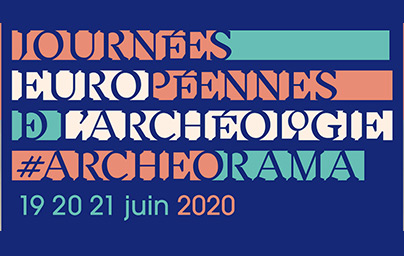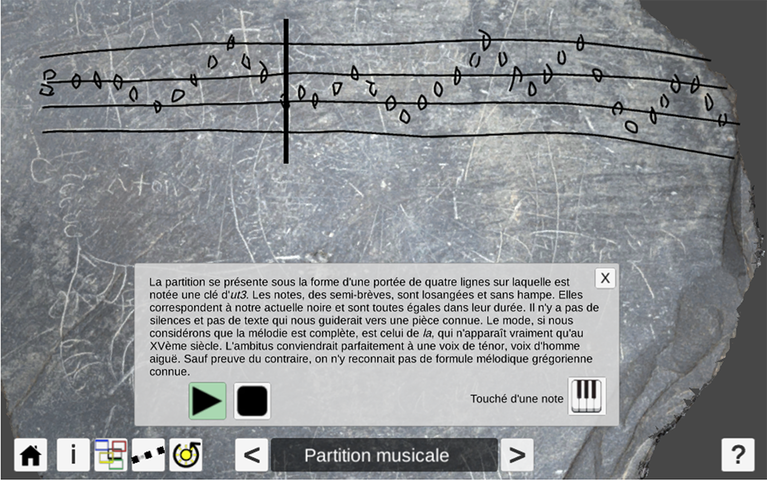

As archaeological remains are fragile witnesses to be analyzed, interpreted, preserved and valorized, discover on the occasion of the European days of archaeology, the multiple innovative digital approaches in this field ...
Valérie Gouranton (associate professor INSA) coordinator of the ANR-FRQSC INTROSPECT project and Ronan Gaugne (research engineer), members of the Hybrid research team.
From the engraved tablet to the digital tablet, the story of a 15th century score
During the excavations of the Jacobins convent by the Inrap (RO G. Le Cloirec), about ten engraved schist tablets dating from the 15th century were discovered in the floor of the old refectory.
One of these tablets contains a musical score. This tablet has been analyzed using several 3D digital techniques by IRISA and Inria research center - Bretagne Atlantique.
Find the article also on https://osur.univ-rennes1.fr/news/application-numerique-partition-musicale-couvent-jacobin-rennes.html

Travel stories of the W8banaki and Huron-Wendat wampums.
3D Digital Methods for First Nations Cultural Heritage
Innovative 3D acquisition and characterization techniques were used to digitize, model, and virtually study two wampums (a set of beads made from shells by Northeastern Amerindians) donated by the Huron-Wendat and Abenaki First Nations to the Chartres Cathedral chapter at the end of the 17th century.
Study carried out as part of the ANR-FRQSC INTROSPECT project
Introspective study of an animal mummy
Over the past decade, thanks to the improved accessibility of new medical imaging technologies, research into the study of the animal mummies of ancient Egypt has made significant advances that have led to a better understanding of the history and culture of this civilization.
We have combined a medical imaging technique, computed tomography, with 3D augmented reality and 3D printing technologies to further the study of these types of mummies.
Study carried out within the framework of the ANR-FRQSC INTROSPECT project, in collaboration with the Musée des Beaux-Arts de Rennes and the MAHES animal mummies study project of the Labex ARCHIMEDE.
The site of Beg-Er-Vil at the time of 3D digital archaeology
Digital archaeology results in the ANR-FRQSC INTROSPECT project. Virtual excavation of the Beg-Er-Vil site on the Quiberon peninsula.
A collaboration between IRISA and the Centre de Recherche en Archéologie, Archéosciences et Histoire ( UMR 6566 CReAAH), with the participation of Virtual-Archeo.
https://osur.univ-rennes1.fr/news/revenir-sur-nos-fouilles-un-vieux-reve...
From 3D scanning to virtual excavation
Thanks to technical advances in 3D scanning and virtual reality, we have succeeded in offering a virtual excavation system, allowing to study artifacts in a non-destructive way. For example, we were able to study a funerary urn through CT scan data and virtual reality interaction.
Étude réalisée dans le cadre du projet ANR-FRQSC INTROSPECT
Archaeology and new technologies with the Mag of Science! | Inrap Grand-Ouest
Partner of the European Archaeology Days and #Archeorama, the SCIENCE&VIE TV channel offers two episodes of the Mag de la science, to understand everything about the progress of technologies in archaeology. With Théophane Nicolas, archaeologist at Inrap.
- Épisode 27 : « Les mondes disparus » (avec la momie de chat)
- Épisode 36 : « Archéologie : quand le Passé rencontre le Futur ».
Are you interested in archaeology? Consult the site of the Journées Européennes de l'Archéologie
